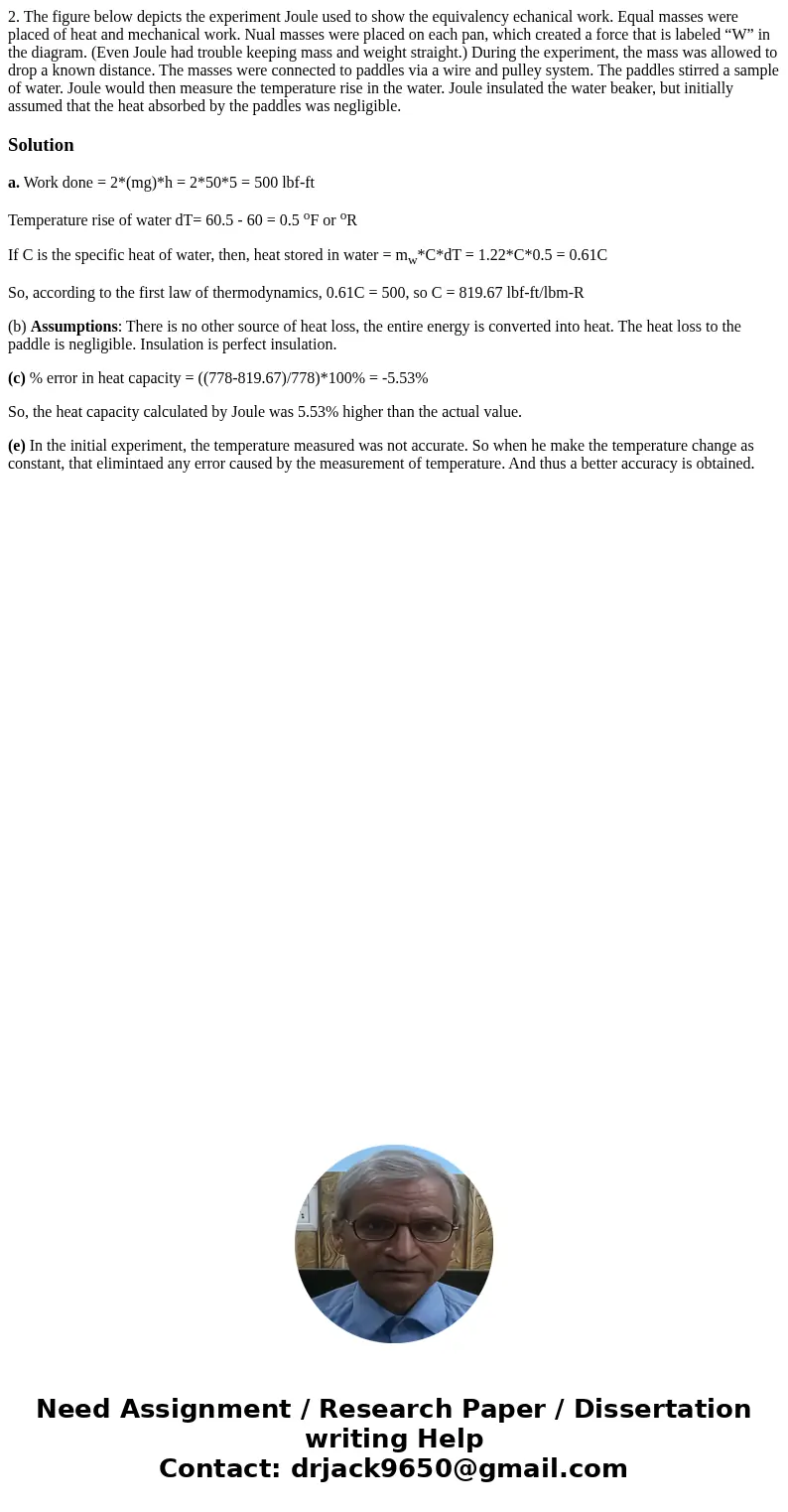2 The figure below depicts the experiment Joule used to show
Solution
a. Work done = 2*(mg)*h = 2*50*5 = 500 lbf-ft
Temperature rise of water dT= 60.5 - 60 = 0.5 oF or oR
If C is the specific heat of water, then, heat stored in water = mw*C*dT = 1.22*C*0.5 = 0.61C
So, according to the first law of thermodynamics, 0.61C = 500, so C = 819.67 lbf-ft/lbm-R
(b) Assumptions: There is no other source of heat loss, the entire energy is converted into heat. The heat loss to the paddle is negligible. Insulation is perfect insulation.
(c) % error in heat capacity = ((778-819.67)/778)*100% = -5.53%
So, the heat capacity calculated by Joule was 5.53% higher than the actual value.
(e) In the initial experiment, the temperature measured was not accurate. So when he make the temperature change as constant, that elimintaed any error caused by the measurement of temperature. And thus a better accuracy is obtained.

 Homework Sourse
Homework Sourse